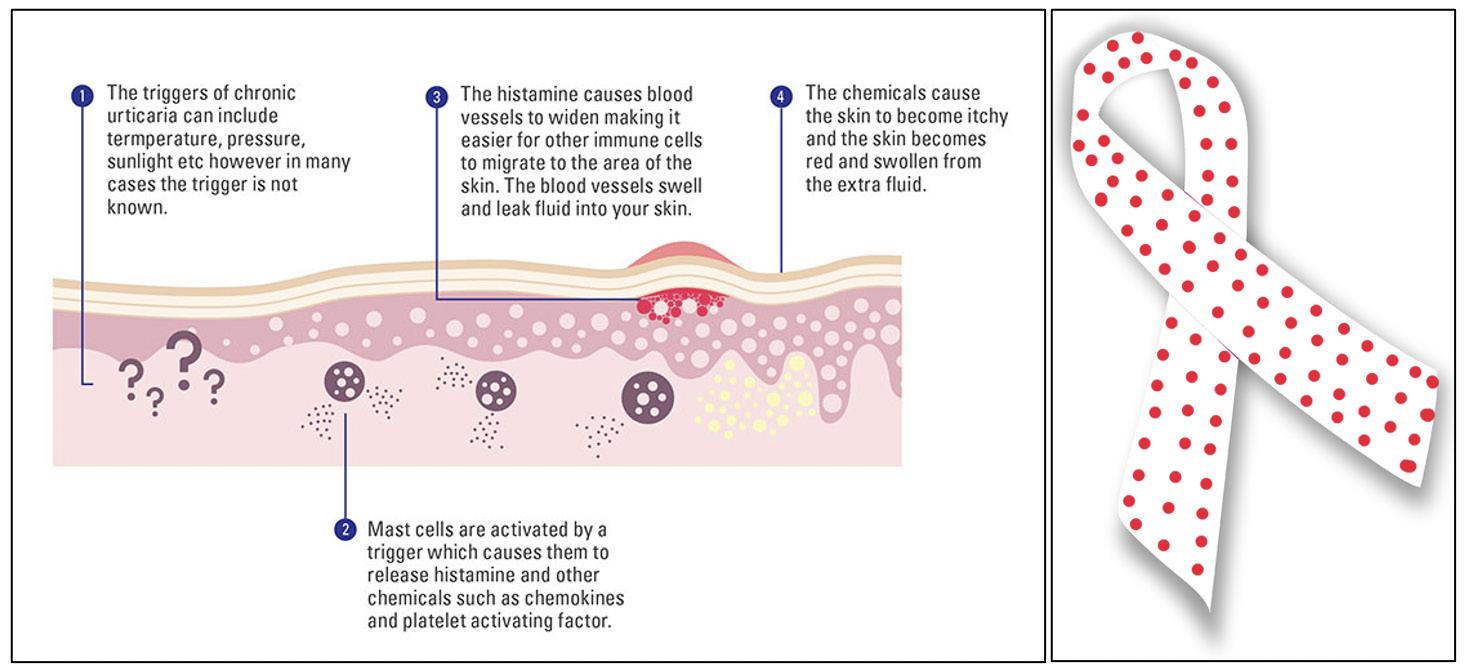
17 minute read
Ariela Feinblum '23 & Dr. Yvon Bryan
Doctors Under the Microscope: An Informative Look at Coping with Death in Health Care
BY ARIELA FEINBLUM '23, DR. YVON BRYAN MD
Advertisement
Cover Image Source: Unsplash
Image 1: A distraught doctor. Image Source: Unsplash Introduction
e COVID-19 pandemic has a ected pre-med undergraduate students in many ways; though we o en focus on the pandemic preventing students from shadowing doctors, it has also directed many undergraduates’ attention to the death that doctors encounter in their work. is has been an eye-opening experience for many, but doctors have had to deal with patients dying since long before the pandemic. is can be very upsetting for doctors, like that portrayed in Figure 1. As an undergraduate student and aspiring doctor, myself, I believe it is essential to understand how doctors deal with this di cult aspect of their jobs. Many undergraduate students do not think about how they will personally deal with the inevitable deaths of future patients. ere are also many di erent types of patient deaths. It is important for undergraduates to think about such factors before they become practicing medical professionals. Deaths caused by things like suicide and murder can be very troubling and tragic. Other deaths, such as those of patients who die with the assistance of euthanasia, can be seen as ending the patients’ pain and su ering. A patient's death does not have to be violent for a doctor to have di culty coping. Factors like the patient's age can a ect how hard it is for the doctor to process that patient’s passing (RhodesKropf et al., 2005).
I used the eld of anesthesiology as a lens into the greater eld of medicine. To understand how di cult some cases are for doctors to

deal with, I asked Dr. Yvon Bryan, a pediatric anesthesiologist at the Dartmouth-Hitchcock Medical Center, about his experience in dealing with patient deaths. rough my discussions with Dr. Bryan, as well as through a literature review, I came across some important factors in uencing how doctors conceptualize and deal with death. First, it is important for undergraduate students to understand the physiology of how a patient dies. Many doctors intellectualize death by thinking about the biological processes that led to a patient's ultimate death, compartmentalizing death’s physical properties from its philosophical implications. Next, pre-med students should know that di erent types of death tend to a ect doctors di erently. Factors like the patient's age and cause of death can a ect how doctors view and personally handle a speci c patient’s death. ere are even elds in medicine that revolve around death such as palliative care or with assisting with euthanasia. In this paper. I will discuss some of the issues a ecting how doctors cope with patient deaths (Danticat, 2017).
Loss of Vital Signs: e Numerical Intellectualization of Death
ere are key physical systems to focus on when it comes to understanding death from a biological perspective. ese systems include the cardiovascular, pulmonary, endocrine, and neurological systems. To understand how these systems work together, we can use the analogy of the body to a car. In the cardiovascular system, the heart is like an engine, which pumps blood and makes the body work. e exhaust would be the pulmonary system breathing in air and carbon dioxide. e endocrine system works to maintain the body's hormonal balance. Finally, the neurological system directs all other systems and collects sensory information to assess when functional adjustments are necessary (Dr. Bryan, Personal communication, October 2021).
In medical school, students o en spend their rst-year learning about human anatomy and their second-year learning about potential bodily abnormalities. On a basic level, the main systems can malfunction in di erent ways. Learning how the brain works is di erent from understanding dementia. O en, when the cardiovascular system malfunctions, myocardial ischemia occurs, or when the pulmonary system malfunctions, the lungs su er from bronchitis or emphysema. It is important to note that there is a di erence between anatomy and/or physiology and the qualitative experience of a patient, and it may be troubling to separate the anatomy of the patient from their experience. In other words, a persons lived experience is di erent from their biology. For example, a person’s brain is o en viewed as a structure in quantitative form, while their mind is viewed as a qualitative entity of who they are as an individual. Although, it is important to note that there are many cognitive scientists and doctors that believe that every aspect in one’s mind is a result of the workings of the physical brain. Yet, many still challenge this view on religious grounds (Trivate et al., 2019).
Death may be viewed as the ultimate lack of function of one's anatomy or physiology, but it is also important to recognize the ambiguity between the dying cells and organs and lack of the individual’s life. It may sometimes be di cult for students to understand the transition between life, dying, and death. One explanation is that dying is a lack of action. While one is living and healthy, they have their organs and necessary
systems active. However, life and death are not a completely binary phenomenon. ere are many di erent examples that convey how these grey zones may present themselves in patients. First, when a patient has a traumatic brain injury (TBI), they traditionally have had relatively normal brain function before their injury. Depending on the part of the brain that is damaged, patients can have long or shortterm memory loss, trouble with attention, or even trouble recognizing objects (Goldstein, 2014). ese types of injuries may not a ect the main systems that the patient depends on to live like the cardiovascular or endocrine system, but it can nonetheless a ect their abilities to function in their daily lives. For example, if patients can’t remember their way home, or where they put things, TBIs can be extremely debilitating and sometimes even dangerous. ese patients are alive but cannot live their lives the same way they did prior to their brain injury.
Another example demonstrating the nonbinary nature of life and death is abnormalities
Image 2: e cardiovascular system. Image Source: Unsplash
in one's liver or kidneys. Abnormalities in the liver and kidney can present themselves in various ways, such as a change in personality or ability to function in one’s daily life. One example of how this grey area can present itself is with patients with both Type 1 and Type 2 diabetes. ose with diabetes have a slow deterioration of their anatomical and physiological systems. Diabetes can lead to the requirement for dialysis treatment or kidney transplants for some patients. People may begin to lose the physical ability to live without support as well as a sense of who they are and their qualitative experience of the world (Mertig, 2012).
Overall, when examining death from a physiological perspective, it is also important to distinguish between brain physiology and the functions or states that the brains physiology facilitates, as many anesthesiologists do in monitoring patients. is is an important topic when looking at patient death through the lens of anesthesiology. A patient can technically have their biological systems intact but have changes in brain function. Di erent ways your brain can change include – but are not limited to – being fully unconscious by use of anesthetic agents or minimally sedated. In these cases, many doctors may not see the patient as awake in the same way they do a patient who can communicate with them. is sedated state puts patients in a gray area between life and death for some anesthesiologists. is begs the question of how doctors view neurological conditions such as dementia that may cause people to lose much of who they previously were and brings up questions of how physicians deal with, or internalize, the impact of their patients' conditions on themselves. Overall, these questions are ones that pertain to doctors in all elds of medicine and are particularly common in the eld of anesthesiology (Dr. Bryan, Personal communication, October 2021).
Cause of Death: Qualitative Impact on Physicians
Something I learned through speaking with Dr. Bryan is that physicians o en have no way of knowing just how deeply a patient's death is going to a ect them until they experience that patient's death. Di erent types of patient deaths can also make a person question various aspects of one's personal beliefs. For example, when a doctor has a pediatric cancer patient, it can cause them to question the unfairness of life. ese types of questions stem from seeing so much su ering in such young patients and their families. Children may die from many di erent things, such as cancer, infection, and accidents. Pediatric patient deaths can be especially hard for physicians due to the realization of the quantity of years the patient has lost. Speci cally, when a child dies, there is lost potential, and one inevitably thinks about what type of person that child may have been. e child has lost their life, and with this comes the loss of the future years the child would have experienced. (Granek et al., 2016; Dr. Bryan, personal communication, October 2021).
More generally, there are many di erent emotions and thoughts associated with doctors' grief over a patient. Doctors are troubled by the loss of life. ey may also feel guilty because they made a mistake, or because they wish they had done more to try and save the patient. ere are also potential legal and nancial rami cations that physicians may encounter in addition to the other di cult parts of a patient's death. is can be true regardless of a doctor's actual ability to save a patient which can lead to feelings of helplessness. For example, a child may come in with a severe trauma, and even though there was no way to save the child, the physician may still feel bad for not being able to save them. Even when a doctor does everything they can, they may still feel guilty about a patient's death. Many doctors take patients’ deaths and try to learn something from them. Physicians o en have a hard time knowing when to stop trying to save a patient. Additionally, especially during the time of COVID-19, many doctors have put their lives at risk in order to treat patients. Traditionally, one may not think of doctors as risking their lives to save others, but this is not true. Physicians are passionate about saving lives, even when it means risking their own. is makes it even more di cult to accept a patient's death that a physician works hard to save (Kostka et al., 2021; Dr. Yvon Bryan, personal communication, October 2021).
Several factors play a part in how a patient's death may a ect their doctor. A primary factor is whether the death was unexpected. Unexpected deaths may take a larger emotional toll on many doctors than expected deaths do. If a patient su ering from terminal cancer dies, it may be sad, but less di cult because it was expected. If a patient comes in from being in an accident and dies, this is o en harder for doctors to deal with. is is especially true for children who die suddenly. However, not all deaths are tragedies. Some patients may have lived full lives and died from an illness later in life. In these cases, it may be easier for doctors to deal with their deaths (Dr. Yvon Bryan, personal communication, October 2021; Jones, & Finlay, 2014).
In this section, I will use several case studies to try and understand how various patient deaths a ect doctors di erently and the wisdom a doctor may gain from speci c patients they lose. Dr. Bryan shared with me various cases he has encountered. He also explained what he learned from each case and how it may have changed how he thought about things in his own life. As a future physician, I am trying to learn about how the body works and understand the mechanistic aspects of the human body as well as its physiology. What I have learned is that the body is the addition of many parts. e cases below illustrate not just the loss of an organ system, but the loss of an entire life. Understanding the physiology of how someone dies and how one might try and save them is not the same as the tragedy that surrounds a patient’s death (Dr. Bryan, Personal communication, October 2021).
When talking about anesthesia speci cally, it is important to remember that anesthesiologists spend most of their time with their patient unconscious. is means that the patient doesn't necessarily show their humanity for the majority of the time that the anesthesiologist is with them. Dr. Bryan told me how he re ects on cases and the importance of seeing the patients not just as having a type of issue but rather as human beings. All the patient deaths had a common lesson/theme, each death taught something about humanity (Dr. Bryan, Personal communication, October 2021).
e rst case was his rst patient death in his third year of medical school. A doctor’s rst patient death is always signi cant. In this case, the patient, a farmer, came into the emergency room and ultimately died later during hospitalization. is was di cult for Dr. Bryan, as he spent time with the patient and saw their humanity. Initially, the patient was just a human being who came into the emergency room with a problem. Dr. Bryan’s later familiarity with the patient made the death harder to deal with on a personal level. When describing the case, he stated that this patient essentially gave him a tour of the hospital because of all the complications the patient experienced. is speci c patient was in the hospital for about a month before he died from vascular disease and end organ failure. One of the main lessons I learned from this case was that the most di cult part of seeing a patient die is sometimes watching the humanity be lost from the patient (Dr. Bryan, Personal communication, October 2021).
Next, he told me about a case which involved a two-year-old boy who was attacked and bitten by a dog, unprovoked. e dog was the grandfather's rottweiler. e boy came in with bite injuries on his thigh, face, and head. Before going into the operating room, the boy was not thought to be at high risk of dying. is element of the case made it more di cult, as the death was unexpected. During surgery, the doctors found that a bone chip had gone into the boy's sagittal sinus in the boy’s brain. When the neurosurgeon tried to take it out, the child ended up bleeding to death in the operating room. is case was particularly di cult for Dr. Bryan for many reasons. e unexpected nature of the patient’s death meant that he had no time to re ect on the case before going into the operating room. is case was also very tragic and complicated, as it was the grandfather's dog that was ultimately responsible for the boy's death. e odds of dying from a dog bite are low, which made the death more surprising and therefore more di cult. Another more obvious factor in this case was the age of

Image 3: An operating room. Image Source: Unsplash
Table 1: e impact of death and what we can learn from it based on my interviews with Dr. Bryan. Table Source: Created by Author

the patient, in addition to the cause of death. e boy was just two years old when he died. e boy also died a er being bitten by a pet, something many of us interact with every day (Dr. Bryan, Personal communication, October 2021; Gazoni et al., 2008).
How Does the Student Learn from the Wisdom of Death?
rough my research and conversations with Dr. Bryan, I learned a lot about how doctors deal with patient deaths. e main thing I have learned is that thinking about how I, a future doctor, will deal with death is helpful but will never fully prepare me to deal with a patient's death. Doctors cannot tell how a patient's death will a ect them until a er it happens, and for this reason, thinking about how one will deal with it is important but insu cient to prepare for the real experience. Each doctor comes with their own personal baggage, opinions, and histories. Doctors can sometimes react irrationally to patient deaths because of these factors. For example, Dr. Bryan did not allow his children to ever go on trampolines a er having seen a patient whose injury was caused by a trampoline accident. is may not have been rational to never allow his children on a trampoline because of a single patient, yet this was his reaction. Another example Dr. Bryan gave me was how he never allowed his children to have a dog. Many dogs are not dangerous; nonetheless, Dr. Bryan did not allow his children to have a dog a er seeing a child die because of one. A doctor's personal history will inevitably in uence how each doctor handles the loss of each individual patient. Generally, not all deaths are the same, and some will a ect doctors more or less than others (Gazoni et al., 2012).
Another important thing I learned from Dr. Bryan is that thinking about patient deaths involves understanding the humanity of people and not just seeing a patient as a set of numbers. Patient deaths can have qualitative, long-term e ects on their loved ones as well as on the doctors who treated them. is is a very important point to recognize. Dr. Bryan taught me that patient deaths begin to change you, and that is completely normal. Patient deaths can have lasting psychological impacts on doctors, enabling them to think about what they really value in life. Doctors also learn from patient deaths. Doctors see the value in enjoying life rsthand because they watch patients lose the ability to do the things those patients enjoy. Death can happen quickly, even in just a minute, though the period leading to death can involve a slow decline with a drastic decline at the very end. Overall, this paper raises many questions and considerations for undergraduate students considering a career in medicine. It also aims to better prepare students to shadow doctors in the future (Zheng et al., 2018).
References
Danticat, E. (2017). e art of death: Writing the nal story. Graywolf Press.
Gazoni, Amato, P. E., Malik, Z. M., & Durieux, M. E. (2012). e Impact of Perioperative Catastrophes on Anesthesiologists: Results of a National Survey. Anesthesia and Analgesia, 114(3), 596–603. https://doi.org/10.1213/ ANE.0b013e318227524e
Gazoni, Durieux, M. E., & Wells, L. (2008). Life A er Death : e A ermath of Perioperative Catastrophes. Anesthesia and Analgesia, 107(2), 591–600. https://doi.org/10.1213/ ane.0b013e31817a9c77
Goldstein, E. B. (2014). Sensation and perception. Wadsworth.
Granek, L., Barrera, M., Scheinemann, K., & Bartels, U. (2016). Pediatric oncologists' coping strategies for dealing with patient death. Journal of Psychosocial Oncology, 34(1-2), 39-59. doi: 10.1080/07347332.2015.1127306
Jones, R., & Finlay, F. (2014). Medical students’ experiences and perception of support following the death of a patient in the UK, and while overseas during their elective period. Postgraduate Medical Journal, 90(1060), 69–74. https://doi. org/10.1136/postgradmedj-2012-131474
Kostka, A. M., Borodzicz, A., & Krzemińska, S. A. (2021). Feelings and Emotions of Nurses Related to Dying and Death of Patients – A Pilot Study. Psychology Research and Behavior Management, 14, 705–717. https://doi.org/10.2147/PRBM. S311996
Mertig, R. G. (2012). Nurses’ guide to teaching diabetes self-management (2nd ed.). New York: Springer Pub.
Rhodes-Kropf, Carmody, S. S., Seltzer, D., Redinbaugh, E., Gadmer, N., Block, S. D., & Arnold, R. M. (2005). “ is is just too awful; I just can’t believe I experienced that...”: medical students’ reactions to their “most memorable” patient death. Academic Medicine, 80(7), 634–"... thinking about patient deaths involves understanding the humanity of people and not just seeing a patient as a set of numbers."
Trivate, T., Dennis, A. A., Sholl, S., & Wilkinson, T. (2019). Learning and coping through re ection: Exploring patient death experiences of medical students. BMC Medical Education, 19(1), 451. doi: 10.1186/s12909-019-1871-9
Zheng, R., Lee, S. F., & Bloomer, M. J. (2018). How nurses cope with patient death: A systematic review and qualitative meta-synthesis. Journal of Clinical Nursing, 27(1-2), e39-e49. doi: 10.1111/ jocn.13975










